Panasonic Lumix DMC-GH2 Review
Panasonic Lumix DMC-GH2 Introduction
The Panasonic Lumix DMC-GH2 is the current flagship Micro Four-Thirds SLD from Panasonic. This digital camera is built around a 16 megapixels Four-Thirds sensor with an maximum ISO of 12800, 5 FPS full-resolution output and full 1080p HD video capability. The GH2 is built mini-DSLR-style with a good hand-grip and a viewfinder hump covering a large high-resolution EVF.
Video capabilities are central to the GH2 to create a camera which tries to deliver both outstanding images and video. Video is available in multiple resolutions, frames rates and codecs. There is a built-in stereo microphone, an audio-level monitor and a mini-jack to use an external stereo input. Panasonic also designed a continuously variable aperture Panasonic Lumix G Vario HD 14-140mm F/4-5.8 ASPH OIS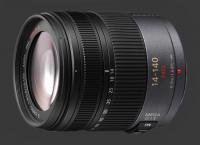
Panasonic Lumix G Vario HD 14-140mm F/4-5.8 ASPH OIS to allow smooth transition of exposure during video recording.
This SLD provides a large number of buttons and dials to control its main features with minimum interaction through the menu system. Its EVF lets most settings be changed at eye-level. A highly modal interface indicated it is designed for advanced users, as does its extensive feature set.
This digital camera review analyses the features, ergonomics, usability, performance and image quality of the Panasonic Lumix DMC-GH2.
Panasonic Lumix DMC-GH2 Features
Sensor
- 16 Megapixels CMOS Four-Thirds sensor
- Micro Four-Thirds lens mount
- Built-in ultra-sonic dust-reduction
Exposure
- ISO 160 to 12800 sensitivity
- Auto ISO, customizable limit from 200 to 3200
- 1/4000-60s Shutter-speeds, Blub up to 120s
- Optional long shutter noise-reduction
- PASM Exposure modes
- Program-Shift in P mode
- Multi-Segment, Center-Weighed and Spot metering
- Auto-Exposure Bracketing, 3, 5 or 7 frames, 1/3, 2/3 or 1 EV increments, Ordered or unordered
- Exposure-Compensation, ±5, 1/3 increments
- Flash-Compensation, ±2, 1/3 increments
- Auto, Forced, Off, Slow-Sync flash modes
- Optional flash redeye removal
- Flash fired on first or second curtain
Image Parameters
- Automatic, 5 presetsSunny, Cloudy, Shade, Tungsten, Flash, kelvin and 4 custom white-balance settings
- White-balance fine-tuning along 2 axis in 19 steps
- White-balance bracketing, 3 frames along one axis, 3 step sizes
- 10 Color and 3 B&W Film modes
- Adjustable contrast, sharpness, saturation and noise-reduction, 5 steps each
- sRGB or Adobe RGB color space
- Multi-Film mode, takes one shot and saves it using 3 film styles
Drive
- Continuous drive, 5 FPS without preview or 3 & 2 FPS with preview, Unlimited JPEG or 7 RAW
- Continuous drive, 40 FPS at 4 megapixels, 40 frames, JPEG only
- Self-timer, 2s, 10s or 3 shots @ 10 seconds
Focus
- Single-shot autofocus (AF-S), continuous autofocus (AF-C) or manual-focus (MF)
- Center-point, 23-points, subject tracking and face-detect contrast-detect autofocus
- Optional quick-shift autofocus
- Optional MF magnification
- Optional AF-Assist lamp
Video
- AVCHD codec: 1080i & 720p, 2 quality levels
- M-JPEG codec: 720p, WVGA, VGA, QVGA
- Built-in stereo microphone
- Audio-level meters, 2 channels
- Audio-input gain, 4 steps
- Wind-filter, 3 levels or off
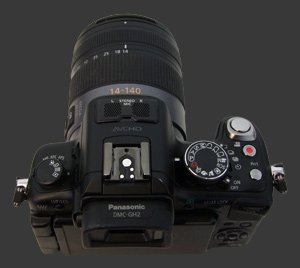
Display & Viewfinder
- 0.2" EVF, 1.5 Megapixels
- 3" LCD, 460K Pixels
- Rotating touch-screen display
- EVF/LCD auto-switching Eye-Start sensor
- Digital depth-of-field preview
- Shutter-speed simulation mode
- Optional live histogram
- Optional guidelines, 3 types
- Optional blinking highlight
- Adjustable brightness, 7 steps
- Adjustable color, 11 steps, 2 axis
Controls
- One clickable control-dial
- Customizable AE-L/AF-L button, AE, AF or AE&AF
- AE-L/AF-L button hold and toggle modes
- 3 Customizable function buttons
Output Processing
- 4:3 Native aspect ratio
- 3:2, 16:9 & 1:1 cropped aspect ratios
- Aspect ratio bracketing from one shot
- 16, 8 and 4 Megapixels modes
- JPEG, RAW, RAW+JPEG capture
- 2 JPEG Compression qualities
- Optional contrast enhancement, 3 levels
- Optional resolution enhancement, 4 levels
- Optional face-recognition, max 6 faces
Connectivity
- Hot-shoe for external lighting
- Stereo mini-jack audio input
- HDMI (1080i) output
- A/V (NYSC / PAL) output
- USB 2.0 connectivity
Misc
- Lithium-Ion battery
- SDXC memory
- Lens stabilization control, 3 modesPreview and exposure, Exposure only, Panning
Panasonic Lumix DMC-GH2 Usability - How easy is it to use?
The Panasonic Lumix DMC-GH2 itself feels light. The supplied stabilized 14-140mm F4-5.8 OIS
Panasonic Lumix G Vario HD 14-140mm F/4-5.8 ASPH OIS lens adds a considerable amount of weight as the second heaviest lens in Panasonic's current lens offerings. Most Micro Four-Third lenses weigh half as much, so everything together should generally feel more balanced. The GH2 is quite solid except for the LCD hinge which has some flex in it and seems like it could break off with minor impact. The lens itself is very well built and sturdy. A metal tripod mount underneath the camera is inline with the center of the lens, which is ideal for panoramas.
Viewfinder & Display
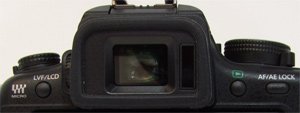 The Panasonic Lumix DMC-GH2 is equipped with a 1.5 megapixels EVF which provides a clear and well-magnified view. Its rubber housing protrudes from the back of the camera for added comfort. The EVF gives a high-resolution preview with a good refresh rate. There is also a hinged 3" LCD with 460k for framing. While the LCD is crisp, the EVF is clearly better for seeing fine details. Both displays can an image with overlaid information and an image-only view. Additionally, the LCD can show an editable status screen or can be entirely off.
The Panasonic Lumix DMC-GH2 is equipped with a 1.5 megapixels EVF which provides a clear and well-magnified view. Its rubber housing protrudes from the back of the camera for added comfort. The EVF gives a high-resolution preview with a good refresh rate. There is also a hinged 3" LCD with 460k for framing. While the LCD is crisp, the EVF is clearly better for seeing fine details. Both displays can an image with overlaid information and an image-only view. Additionally, the LCD can show an editable status screen or can be entirely off.
The EVF is controlled by an Eye-Start sensor which works perfectly to switch between the displays. Usually, the Eye-Start sensor switches between displays. When the LCD is off or closed against the camera, the Eye-Start sensor toggles the EVF on or off. There is an almost redundant EVF/LCD toggle button which does the same switching as the Eye-Start sensor.
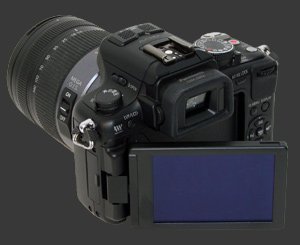 One thing we really like to see on SLD cameras is an exposure-priority display which gives them a nice edge over SLRs while changing exposure-parameters. The good news is that the GH2 has one. The bad news is that it is not readily accessible and quite unusable under some circumstances.
One thing we really like to see on SLD cameras is an exposure-priority display which gives them a nice edge over SLRs while changing exposure-parameters. The good news is that the GH2 has one. The bad news is that it is not readily accessible and quite unusable under some circumstances.
Normally, both displays show an approximation of exposure based on the metered brightness and up to 3 stops of EC. This shows a good preview under most circumstances except in Shutter-Priority mode. To see an exposure-preview in S mode, one must press the DOF-Preview button first and then press the Display button. This must be repeated after EVERY shot.
What the GH2 does to make the exposure-priority display nearly impossible to use in low-light is that it uses a slow shutter-speed to produce it rather than digital gain. This makes the refresh rate impossible slow and the display too choppy. While on the topic of the LCD, its outdoor visibility is OK but far from class-leading.
The Panasonic Lumix DMC-GH2 has both a dedicated Video mode and direct Video-Recording button. The dedicated mode is quite powerful and gives access to 24 FPS Cinema mode, video manual controls and variable rate video. Extremely importantly, the dedicated video mode always shows the correct framing. This makes it a breeze to set-up framing for recording HD video. Video recording also starts instantly. This is what we ask for from all video-capable digital cameras.
The direct video recording button starts and stops video recording in any mode. The main issue is that setting up framing is usually impossible due to aspect-ratio differences between stills and video. The Panasonic GH2 offers a half-baked solution for this and lets users configure the display to preview video framing instead of still framing. This obviously means that one can switch from not being able to frame videos or not be able to frame stills. The best advice is to just stick to the dedicated video mode.
Ergonomics
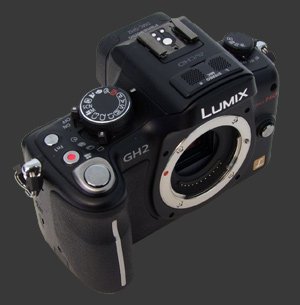 Holding the GH2 is secure thanks to a good hand-grip, similar to those found on advanced ultra-zooms. DSLR owners will certainly find the grip narrow and short but is a reasonable expectation considering Micro Four-Third cameras primarily compete on size. That being said, this Lumix is the largest and heaviest Micro Four-Thirds cameras, although there a few heavier SLD from Sony.
Holding the GH2 is secure thanks to a good hand-grip, similar to those found on advanced ultra-zooms. DSLR owners will certainly find the grip narrow and short but is a reasonable expectation considering Micro Four-Third cameras primarily compete on size. That being said, this Lumix is the largest and heaviest Micro Four-Thirds cameras, although there a few heavier SLD from Sony.
Ergonomics of the GH2 are relatively good, although cold weather puts a toll on using the GH2. A few small levers and buttons flush with the camera-surface are virtually impossible to use with gloves on, as is the touch-screen. Even more silly is that there is no way to disable all touch-screen functionality, so wiping it after it fogs-up causes the camera to change random settings. Naturally, the LCD can be ignored entirely and closed against the camera, given the excellent EVF.
The shutter-release is comfortable to reach and has a soft but distinct halfway-point. Behind it is the Video-Recording button, which can be disabled to avoid accidentally triggering it while reaching for the Fn1 button behind it. In Video mode, the shutter-release starts and stops filming, so the Video-Recording button is not needed anyway. The Fn1 button is customizable and defaults to changing focus-points, when applicable.
A mode-dial with good detents is stacked above two small levers. One lever is the power-switch. The other selects among four drive modes: Single-shot, Continuous, AE Bracketing and Self-timer. Since these modes except for Single-shot have variants, a trip to the menu is required to set the appropriate details. Once set, the drive-mode lever always uses the selected variant. This is great for using the self-timer, since it cannot reset itself or change durations between shots.
Across the EVF bump, which supports the flash hot-shoe and stereo microphone, is another dial stacked over a small lever. The small dial has good detents to prevent accidental changes and selects between focus-point modes: Single, Multi-Area, Subject Tracking and Face Detection. Most of these mode are extremely flexible: In Single mode, the area can be moved and resized; In Multi-Area, between 4 and 6 areas among 23 can be chosen; and in Face Detection the detection zone can be sized and move. Just the dial is the focus-mode lever. This one has 3 positions: AF-S, AF-C and MF. The levers and dials atop of the GH2 together provide a modal view of their respective settings when picking up the camera.
The rear of the camera includes numerous buttons and this cameras's only control dial. The buttons mostly identical and relatively easy to reach. Some placement is not ideal but is easy to get used to after prolonged use. The Playback button occupies prime real-estate near the AE-L button, which frankly should have been used for a more important operation to perform at eye-level.
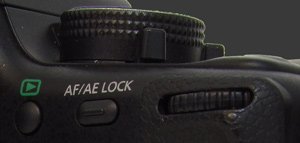 The control-dial is clickable to toggle between two parameters which depend on the current exposure mode:
The control-dial is clickable to toggle between two parameters which depend on the current exposure mode:
- P: Program-Shift / EC
- A: Aperture / EC
- S: Shutter-speed / EC
- M: Shutter-speed / Aperture
While this saves Panasonic from adding a second control-dial or dedicating a button to EC, this modal behavior is cumbersome and requires checking the state of the dial often. This is shown as the currently controlled parameter highlighted in yellow.
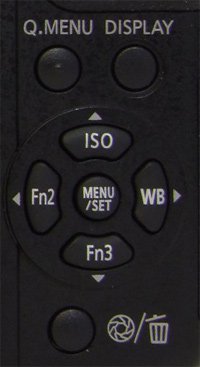 The 4-way controller is made of 5 separate buttons, including the central MENU/SET one. These generally work as expected where each button activates its assigned function and no confirmation is needed to change the value:
The 4-way controller is made of 5 separate buttons, including the central MENU/SET one. These generally work as expected where each button activates its assigned function and no confirmation is needed to change the value:
- Up: ISO changes in full-stops using Left and Right buttons, in 1/3 stops using Up and Down
- Right: WB selected using Left and Right. Down to enter the WB fine-tuning screen. Up to set Kelvin and custom white-balance
- Down: Any one of 18 customizable options
- Left: Any one of 18 customizable options
- Center: Enters the menu system and confirms selections
Just above the 4-way controller are the Quick Menu and Display buttons. Quick Menu brings up an menu of icons lined along the top and button edges of the display. This menu allows to change some camera settings faster than going through the menu system. Several options are poorly labeled and unguessable without reading the manual though.
There is an extensive menu system which is composed of 6 tabs. Each tab shows a menu of up to 7 pages long. Menus are all easy to navigate using the right direction button to select and the left one to cancel. Pressing the Menu button exits the menu at any time. Organization is not entirely logical but not too confusing either. The Display button can show a description for some settings, yet many remain mysterious without remembering what you read in the manual. Stabilization for example has three nondescript options: Mode 1, Mode 2 and Mode 3. Burst Rate offers SH, H, M and L options. Those are not the only ones.
Operating
Operating the Panasonic Lumix DMC-GH2 becomes fairly smooth after a period of familiarization. Since there is no optical viewfinder, it is normal that framing shots cannot be done until the camera has powered up. Focusing is fly-by-wire, although some lenses could override this, so focusing cannot be manually adjusted if the camera is not ready for it. MF mode is one way. There is also a Direct Manual Focus mode, which is labeled as AF+MF in the Customization menu. When enabled, DMF lets the focus ring control focus after the shutter is press halfway. When combined with MF Assist, this instantly zooms into an area of the image for very precise focusing.
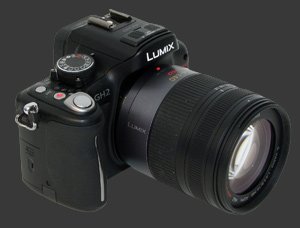 Displays can optionally show a semi-live histogram to help judge exposure. The histogram is based on the computed exposure and EC, just like the preview, so it does not change outside of the camera's exposure range. So a good histogram alone is insufficient to guaranty proper exposure.
Displays can optionally show a semi-live histogram to help judge exposure. The histogram is based on the computed exposure and EC, just like the preview, so it does not change outside of the camera's exposure range. So a good histogram alone is insufficient to guaranty proper exposure.
As the EVF shows the preview electronically, it provides a full HUD with extensive status information, overlays and both quick and normal menus. This lets the GH2 be operated at eye-level quite easily. The Quick Menu button is easily reachable without lowering the camera and it gives access to ISO, WB, Metering and several other important settings. Both the mode-dial and drive-mode lever take a little practice to set without looking at them but changes are reflected in the EVF to confirm. This means the Panasonic GH2 can be very efficient to use, with only the modal control-dial slowing things down.
The rotating LCD is hinged at the side which lets it rotate outwards. This makes it usable for self-portraits with the camera on a tripod. On the other hand, it requires more motion to frame from above or below, since the LCD must first be rotated 180° before it can be tilted. It also puts the display in a more precarious position.
Panasonic Lumix DMC-GH2 Performance - How well does it take pictures?
Performance starts with image quality, which is the criteria used as the foundation of our digital camera ratings. Ergonomic issues may get in the way, but in the end, image quality counts the most. For an ILC, image quality greatly depends on the lens used. While color, noise, exposure and dynamic-range are properties of a camera, distortion, vignetting and chromatic aberrations are properties of the lens. Sharpness and contrast depend on the weakest link. That is, a camera cannot capture more details than a lens lets through. Conversely, it is quite possible for a lens to transmit more details than a sensor can capture.
Image Noise & Details
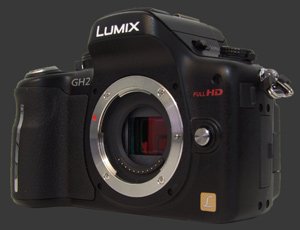 The Panasonic Lumix DMC-GH2 keeps image noise very low while retaining plenty of details up to ISO 400. Noise becomes noticeable at ISO 800 and is slight more pronounced at 1600 but both settings preserve details relatively well. A color-shift towards yellow is noticeable at ISO 1600 and gets progressively more pronounced with each extra stop of sensitivity. ISO 3200 is clearly noisy but remains usable for most common uses. ISO 6400 shows a drastic loss of fine-details and should be reserved for really small prints. The highest sensitivity of 12800 is clearly one step too far even for small 4x6" prints but still shows a recognizable subject in case of emergency.
The Panasonic Lumix DMC-GH2 keeps image noise very low while retaining plenty of details up to ISO 400. Noise becomes noticeable at ISO 800 and is slight more pronounced at 1600 but both settings preserve details relatively well. A color-shift towards yellow is noticeable at ISO 1600 and gets progressively more pronounced with each extra stop of sensitivity. ISO 3200 is clearly noisy but remains usable for most common uses. ISO 6400 shows a drastic loss of fine-details and should be reserved for really small prints. The highest sensitivity of 12800 is clearly one step too far even for small 4x6" prints but still shows a recognizable subject in case of emergency.
Noise-reduction is adjustable on a scale from -2 to +2, where the default setting of 0 is damaging to details at all sensitivities. The best results are obtained at a setting of -2 and shows little difference in image-noise at low sensitivities. From ISO 800 onwards, higher NR settings can hide noise but they do even more damage to image details.
Color & White Balance
Color accuracy is generally good. The Standard film mode produces the most realistic colors with a slight mix of over and under-saturation depending on the hue. A +1 saturation boost improves things on average while giving results more punch. There are many film modes to choose from and each can be adjusted for saturation and contrast in 5 very fine steps to tune the GH2's JPEG output.
Automatic while-balance performance is below average. Under natural light it performs well, just like all modern implementations. Indoors it struggles a lot more with highly inconsistent results. While it handles some indoor lighting well, it leaves an orange tint under CFL bulbs and a strong color-cast for halogen lighting. Unfortunately, presets do not help either because they try to adapt to variations, instead of using a fixed color-temperature, and produce hit or miss results. Judging the correct WB setting is also problematic as the preview does not always correctly show white-balance. At least custom white-balance is spot on.
Exposure
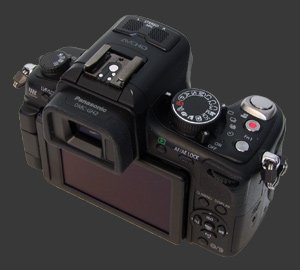 The Panasonic GH2 has an excellent multi-segment metering system. It is conservative and extremely rarely over-exposes. For high-key scenes of low-contrast it needs positive compensation but less than most cameras. The dynamic-range of the LCD when set to High brightness is sufficiently well-aligned that over-exposed images appear over-exposed on the LCD as well. As mentioned in the usability section above, the live-histogram is not 100% reliable. Within the camera's exposure range, it clips a little over 1/3 EV early. Outside of the metering exposure, it can be completely off, so watch out for the shutter-speed or aperture values turning red.
The Panasonic GH2 has an excellent multi-segment metering system. It is conservative and extremely rarely over-exposes. For high-key scenes of low-contrast it needs positive compensation but less than most cameras. The dynamic-range of the LCD when set to High brightness is sufficiently well-aligned that over-exposed images appear over-exposed on the LCD as well. As mentioned in the usability section above, the live-histogram is not 100% reliable. Within the camera's exposure range, it clips a little over 1/3 EV early. Outside of the metering exposure, it can be completely off, so watch out for the shutter-speed or aperture values turning red.
Auto Focus
The GH2 features the fastest contrast-detect system reviewed here so far. It locks focus quickly and accurately under most circumstances. In good and moderate light, the GH2 usually locks in under ½s. It can take longer at close range but not much more than 1s. This performance puts it ahead of all current Micro Four-Thirds digital cameras and just behind the Sony Alpha SLT-A55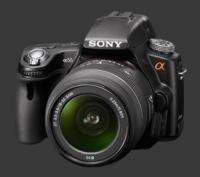
Sony Alpha SLT-A55 which uses a phase-detection.
To speed things up Panasonic borrowed a trick from Sony and added their own technology to it. Optionally, the Eye-Start sensor can trigger autofocus before the shutter is pressed half-way. This brings the lens much closer to where it should be when its time to autofocus but quickly drains the battery, particularly when the camera is dangling from your neck and the Eye-Start sensor constantly detects proximity. Panasonic added a system to reduce premature focusing be measuring camera jitter. When jitter goes down, such as when a photographer is preparing to take a shot, the camera automatically triggers AF. Quite ingenious!
Speed
The GH2 generally remains quite responsive. Most buttons and dials get an instant response. Compared to other SLDs, it performs about average, meaning faster than most fixed-lens cameras but slower than most DSLRs. The following rough measurements characterize its performance:
- Power-On: 1 second
- Power-On to First-Shot: 2 seconds
- Autofocus: ½s on average. Highly dependent on subject and light, quite possible dependent on lens too
- Shutter-lag: Nearly instant with less than ½s blackout with sufficiently fast shutter-speed
- Shot-to-shot: 3/4s in shooting priority or MF modes
- Playback: ¼s to enter, ½s to exit
- Power-Off: 2½ seconds
- Video: ¼s to start in Video mode, ½s to start in other modes, -1s to stop.
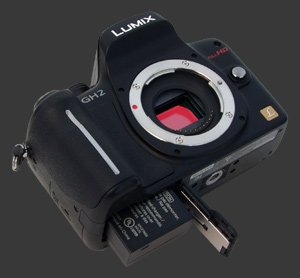
How good these numbers are depend on what this camera is compared against. For non-action shots, these numbers are very suitable and the GH2 rarely gets in the way of getting the shot. The most odd measurement here is that the GH2 cuts off 1 second from the end of video clips.
The Panasonic GH2 is powered by a proprietary Lithium-Ion battery which provides 320-shots per charge according to the CIPA standard. This is above average among SLDs.
Panasonic Lumix DMC-GH2 Conclusion
The Panasonic Lumix DMC-GH2 is a full-featured Micro Four-Thirds SLD which delivers good image quality and a generally solid performance. Image quality is characterized by low noise, good retention of details, excellent metering and nice colors. White-balance performance is the main weakness of the GH2, although the custom white-balance feature gets around this with some discipline. The camera is quite responsive and stands out by its relatively fast contrast-detect autofocus system.
The GH2 provides great sophistication in terms of video recording, with resolutions up to 1920x1080, known as full HD, and frame rates from 24 to 90 FPS in high-speed mode. Advanced audio options include built-in and external stereo sound with input gain control, wind-cut filter and audio-level monitor. A special 14-140mm HD lens is designed to complement this continuous autofocus and a variable aperture for smooth exposure steps during filming.
Ultimately choosing a digital camera is a difficult choice and the position taken by the Lumix GH2 is yet another compromise. This camera delivers image quality comparable to a DSLR but does not match their speed. It one-ups them in terms of video capabilities though. On the other hand, this is one of the largest and heaviest SLD cameras, giving up a good part of the bulk savings offered by most SLDs.
 |
Please Support Neocamera
All information on Neocamera is provided free of charge yet running this website is a huge endeavor. Purchases made via affiliate links found throughout the site help keep it running and up-to-date. There is no additional cost to you, so please consider buying via these links to our affilates:
If you found any information on this site valuable and did not purchase via our affiliate links, please considering donating via PayPal:
Any amount will be greatly appreaciated. Thank you for your support!
Panasonic DMC-GH2 Highlights
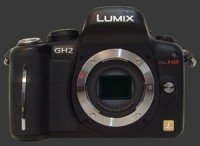
Sensor-Size: 17 x 13mm

Actual size when viewed at 100 DPI
| 16 Megapixels Mirrorless | ISO 160-12800 |
| Micro Four-Thirds Mount 2X FLM | Shutter 1/4000-60s |
| 0.20" Built-in EVF 1.5 Megapixels (0.70X) | Full manual controls, including Manual Focus |
| Automatic Eye-Start sensor | Custom white-balance with 2 axis fine-tuning |
| Built-in Dust Reduction | Spot-Metering |
| 5 FPS Drive, Unlimited Images | Hot-Shoe |
| 1920x1080 @ 24 FPS Video Recording | Stereo audio input |
| 3" LCD 460K Pixels | Lithium-Ion Battery |
| Secure Digital Extended Capacity |
Updates
2024.04.03

Fujifilm X-T5 Review
Newest Fujifilm flagship boasting a 40 MP APS-C sensor, 5-axis IBIS with 7-stop efficiency, 15 FPS continuous drive, 6.2K Video capture, dual control-dials and dual SDXC UHS-II slots in a sturdy weatherproof and freezeproof body.
2023.11.20

Best Digital Cameras of 2023
Find out which are the Best Digital Cameras of 2023. All the new Mirrorless Digital Cameras from entry-level to high-end professional.
2023.07.10

Fujifilm X-H2 Review
40 Megapixels APS-C Hybrid Mirrorless Digital Camera with 7-stop IBIS. Fastest shutter ever and 8K video capture. Large builtin EVF with 0.8X magnification and 5.8 MP, plus an Eye-Start Sensor. Packed with features and large number of controls in a weatherproof and freezeproof body.
2023.05.07

Sony FE 20-70mm F/4G Review
Review of the unique Sony FE 20-70mm F/4G lens. The optical zoom of this lens spans ultra-wide-angle and medium focal-length coverage, making it one of the most versatile Full-Frame lenses on the market.
2023.01.15

Huion Inspiroy Dial 2 Review
Review of the Huion Inspiroy Dial 2 tablet, a medium sized drawing surface with dual dials and customizable buttons. Connects via USB-C or Bluetooth 5.0 with Windows, Linux and Android support.
2022.12.08

How to Pack for a Photo Trip
Find out how to pack for a travel photography trip, carry your gear safely while meeting airline regulations.
2022.11.13

Best Digital Cameras of 2022
The best digital cameras of 2022. A short list of the most outstanding models in their respective categories. Choose one for yourself or as a gift.
2022.09.21

Pentax DA* 60-250mm F/4 SDM Review
Review of the Pentax DA* 60-250mm F/4 SDM, the constant-aperture telephoto zoom with the highest zoom-ratio on the market.
2022.09.20

Pentax DA* 50-135mm F/2.8 SDM Review
Review of the Pentax DA* 50-135mm F/2.8 SDM, the lightest professional telephoto zoom native to the K-mount.
2022.09.10

Pentax DA* 11-18mm F/2.8 DC AW Review
Review of the Pentax DA* 11-18mm F/2.8 DC AW, the widest professional ultra-wide zoom native to the K-mount.
2021.11.24

50 Gifts Under $50 For Photographers in 2021
50 Gifts photographers will love. All for under $50 USD. 2021 Edition.
2021.11.17

Best Digital Cameras for 2021
Neocamera shows which are the very best Digital Cameras for 2021 in every category: Mirrorless, DSLR, Premium Compact, Ultra-Zoom and Rugged.












